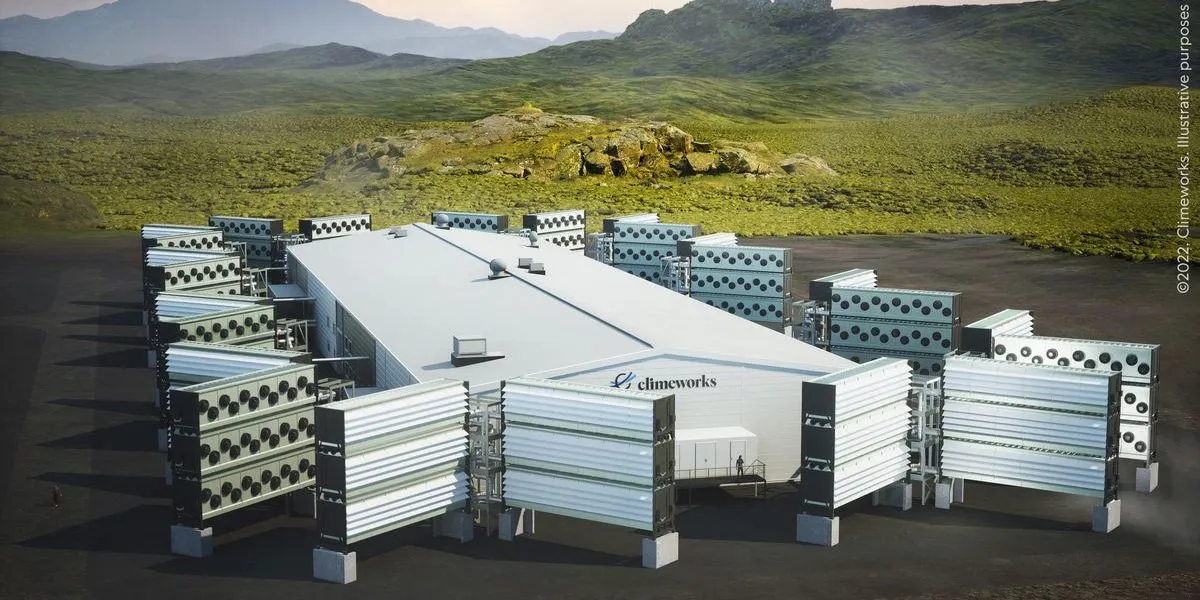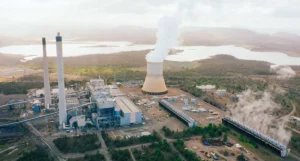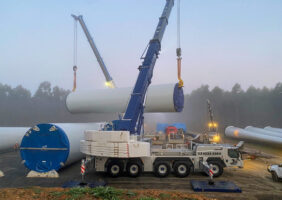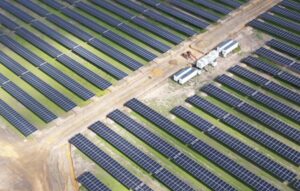Novel carbon dioxide removal technologies such as direct air carbon capture and storage (DACCS), will be essential if the world wants to come close to 2050 temperature targets, according to a new report, but not without putting heavy pressure on energy systems.
DACCS, in particular, must be powered by carbon-free energy to be viable, according to the second State of Carbon Dioxide Removal report, released today.
As ever-rising levels of CO2 in the atmosphere threatens to create hundreds, if not thousands of years of temperature changes on Earth, researchers are increasingly looking at geoengineering techniques to directly extract the gas from the air.
This is already happening at a small scale – and with significant confusion over whether it is even working – using conventional methods such as afforestation/reforestation and forest management, peatland and coastal wetland restoration, and soil carbon sequestration.
But to meet the 7-9 thousand tonnes (Gt) threshold of carbon dioxide that needs to be removed every year from the atmosphere by 2050, just to meet the Paris Agreement 1.5°C target, novel and strange techniques need to be brought in as well, the report says.
These include ocean fertilisation where nutrients are added to the sea to suck out CO2; enhanced rock weathering where crushed rock-plus-rain does the same; turning biomass such as farm residue into charcoal-like biochar and; bioenergy with carbon capture and storage (BECCS).

DACCS only counts as CO2 removal if the carbon is taken directly from the air – if the CO2 comes directly from fossil fuels then it counts as emissions reductions.
“We are looking at DAC. We have some small projects there and see there’s potential because of our large capacity of solar energy,” says report co-author and NSW Department of Primary Industries senior principal research scientist Dr Annette Cowie.
“A portfolio of methods is definitely the best approach.”
Several attempts at DAC are being made in Australia, by the likes of CSIRO, and a company called AspiraDAC which received funding from the owners of Facebook and Google in 2022.
However, this next step of geoengineering techniques is already causing nervousness among scientists and the people who live near these experiments.
Councillors for the suburb of Alameda in San Francisco are set to vote on whether a secretive study by University of Washington researchers can resume, which saw microscopic salt particles sprayed in the sky to make clouds brighter to reflect sunlight back to space.
In South Dakota, the startup Make Sunsets has been upsetting scientists since 2022 when it began an unscientific experiment in injecting sulfur dioxide into the atmosphere in latex balloons to reflect sunlight – a small-scale, real life version of the dystopian novel Snow Crash.
Media coverage of particular methods, for example soil carbon sequestration in Australia and direct air capture in the US, are contributing to rising public awareness but the key factor that influences how people feel about the industry are perceptions of “naturalness” and ecosystem impacts.
Huge gap to fill
The mix of techniques are needed over the next 35 years to bridge a startling gap between the volume of emissions that need to be extracted from the atmosphere and what governments have committed to doing.
The report suggests that alongside massive and immediate cuts in emissions, countries need to lift their game in supporting and rolling out both established methods such as reforestation, and novel tactics such as DACCS.
If 7-9 Gt of CO2 needs to be pulled out of the atmosphere alongside emissions reductions of 34 Gt per year by 2050, more must be done to support the nascent industry, says report co-author and University of Wisconsin–Madison professor Gregory Nemet.
Currently global government commitments reach 4.4 Gt.
Currently just 2 billion tons per year are being removed by CO2 removal methods, mostly through conventional methods like tree planting.
Nemet says meeting Paris goals means rapidly scaling up near-term CO2 removals from the atmosphere. Innovation needs to accelerate, policies need to be put in place to support the industry, and monitoring, reporting and verification (MRV) protocols need to improve.
However, current rates of investment are not helping.
Investments in CO2 removal startups have grown significantly over the past decade, outpacing investment growth for the climate-tech sector as a whole, but declined dramatically in 2023. The sector accounts for just 1.1 per cent of investment in climate-tech start-ups.
Funding for research is growing at 14 per cent a year, although patent grants have declined since 2010, despite those granted being across more diverse and novel ideas.

“Indicators of research, invention and investment in startup companies show evidence of diversification across CDR (carbon dioxide removal) methods,” the report found.
“While CDR is starting to get more attention from policymakers in G20 countries, the voluntary carbon market is playing a key role in scaling up CDR.
International collaboration on CDR is gaining momentum, for instance through Mission Innovation’s CDR Launchpad, initiated in 2022, but proactively coordinated activities and policies is important, as it has been for other technologies such as renewables.










